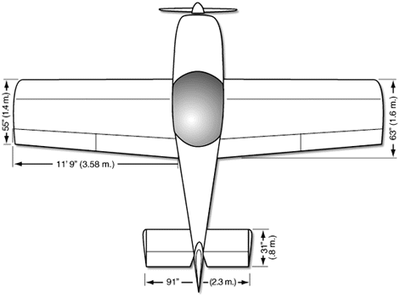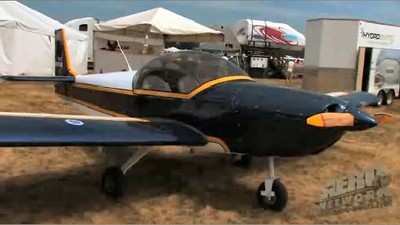Pilot Killed in Albertville, Alabama Mishap
The NTSB has released its preliminary report on a 03 June 2023 accident in which an experimental, amateur-built Zenith 601XL was substantially damaged and its Commercial-rated pilot fatally injured in the vicinity of Albertville, Alabama. The airplane was operated as a Part 91 personal flight.

Preliminary Automatic Dependent Surveillance -Broadcast (ADS-B) data revealed the accident-aircraft lifted-off from Albertville Regional Airport-Thomas J. Brumlik Field (8A0) at 12:20 CDT, departed the airport traffic pattern, and flew in a generally southwesterly direction for approximately 1 hour. During the flight, the aircraft performed numerous heading changes, climbing to four-thousand-feet MSL before descending to two-thousand-feet MSL and leveling off. Shortly thereafter, ADS-B signal was lost.
According to his familiars, the pilot had just finished building the airplane and undertook the accident-flight for purpose of testing such.
Witnesses to the accident reported observing the Zenith 601XL repeatedly “porpoise” before its engine sounds increased dramatically. Immediately thereafter, the airplane entered a vertical descent and disappeared behind a tree-line.
The Zenith 601XL impacted trees and terrain and came to rest inverted on the side of a stream bed some two-statute-miles northwest of 8A0 at an elevation of 1,007-feet. All major components of the aircraft were located at the accident site.
The wreckage path was oriented on a heading of 057-degrees magnetic and was distributed over approximately forty-feet. The Zenith’s fuselage, empennage, wings, and the entirety of its flight-controls were discovered in the immediate vicinity of the primary impact site. The aircraft’s engine, however, separated from its mounts and came to rest some 25-feet northeast of the main wreckage.
Shattered tree-branches, several of which exhibited features consistent with propeller slice-marks, were located around the impact site. Both of the accident-aircraft’s wings were displaced aft but remained attached to the wing spar; the wings’ two internal fuel-tanks were severed from their internal mounts and located, compromised, in the debris field. The odor of automotive gasoline permeated the accident site. Vegetative blight was observed on the grass, leaves, and bushes along the debris-trail.

Post-accident examination of the Zenith’s airframe revealed the elevator trim and its respective servo were in the full-up (nose-down trim) position. The aircraft’s wing-flaps were retracted, and its vertical stabilizer-rudder assembly—a single component which functions after the fashion of a stabi-rudder—had fractured from its connection points but remained in the vicinity of the main wreckage. The remainder of the accident-aircraft’s flight-controls remained partially-attached to their respective mounts. Investigators established control continuity by tracing the control cables to their respective attachment points and manually verifying corresponding movement of the appropriate control surface.
A cockpit multi-function display was recovered from the wreckage and sent to the NTSB’s Washington D.C. Recorders Laboratory for data download.
The wreckage was retained for further examination.
 Aero-News: Quote of the Day (04.28.25)
Aero-News: Quote of the Day (04.28.25) ANN's Daily Aero-Term (04.28.25): Decision Altitude (DA)
ANN's Daily Aero-Term (04.28.25): Decision Altitude (DA) ANN's Daily Aero-Linx (04.28.25)
ANN's Daily Aero-Linx (04.28.25) Airborne-Flight Training 04.24.25: GA Refocused, Seminole/Epic, WestJet v TFWP
Airborne-Flight Training 04.24.25: GA Refocused, Seminole/Epic, WestJet v TFWP Aero-News: Quote of the Day (04.29.25)
Aero-News: Quote of the Day (04.29.25)




